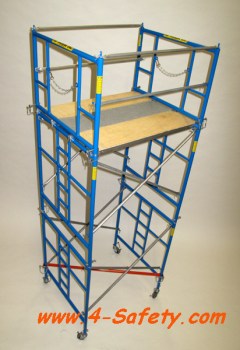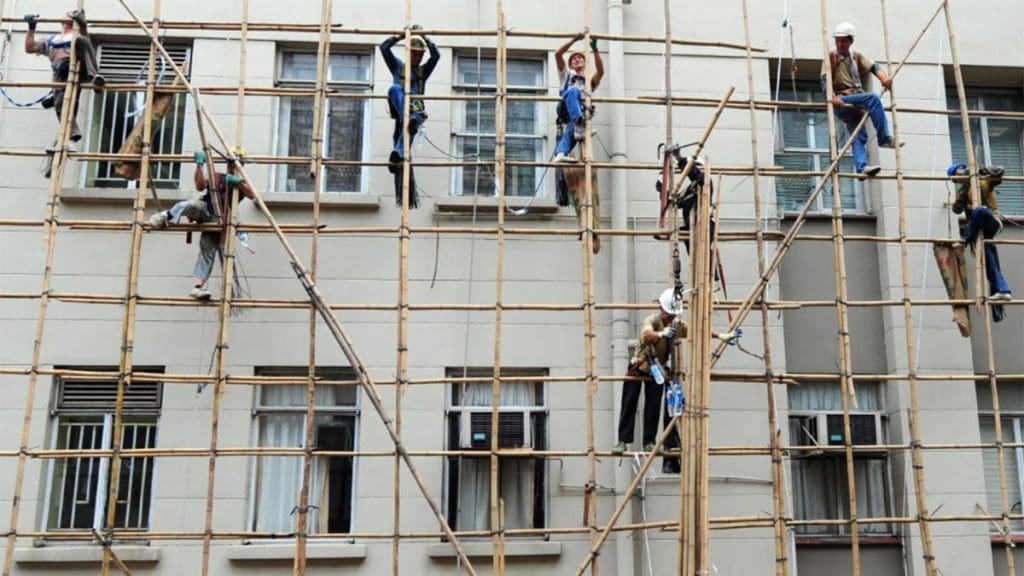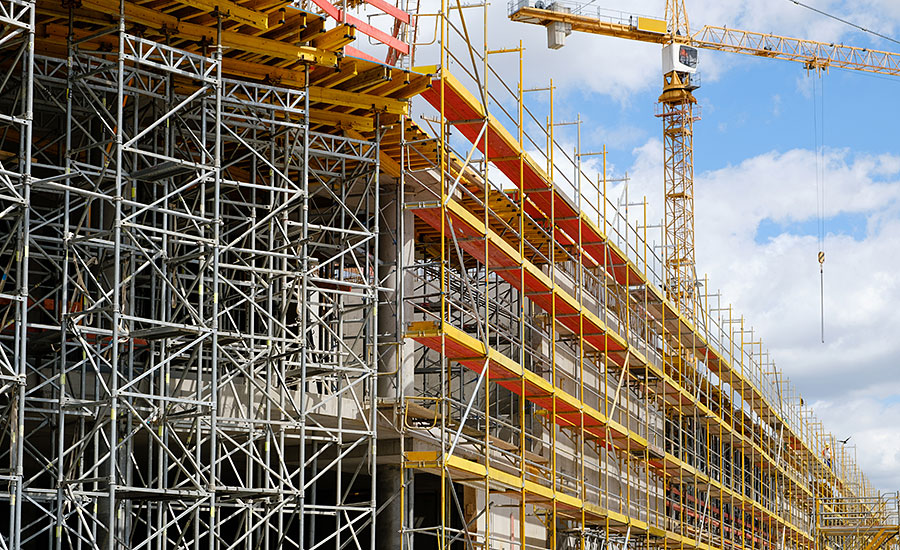Temporary Roof Scaffolding for Your Construction or Renovation Project
Temporary Roof Scaffolding for Your Construction or Renovation Project
Blog Article
Discovering the Different Sorts Of Scaffolding Utilized in Building And Construction Jobs
The construction market relies greatly on various kinds of scaffolding to meet details project needs, each offering unique benefits and applications. Typical framework scaffolding provides a strong structure for general jobs, while put on hold scaffolding is vital for job on high-rise frameworks.

Traditional Frame Scaffolding
Conventional frame scaffolding is one of the most widely utilized methods in the construction sector as a result of its effectiveness and convenience. This system includes horizontal and upright structures that are set up to develop a secure system for workers and materials. The primary components consist of upright messages, horizontal journals, and diagonal dental braces, which together supply a solid structure that can sustain considerable tons.
Among the essential advantages of standard frame scaffolding is its flexibility to various building and construction jobs, varying from domestic structures to large industrial frameworks. The modular style permits easy setting up and disassembly, making it efficient for both short-term and lasting tasks. Furthermore, the system can be tailored in height and width, suiting different structure layouts and site conditions.
Safety and security is critical in scaffolding applications, and standard structure systems are geared up with guardrails and toe boards to stop drops and guarantee employee defense. Regular assessments and adherence to safety and security laws are essential in preserving the stability of the scaffold (Scaffolding). On the whole, traditional frame scaffolding remains an essential option in the building sector, giving a dependable platform for labor and boosting total task efficiency

Suspended Scaffolding
Suspended scaffolding supplies a distinct option for construction jobs that call for access to elevated surface areas, especially in situations where traditional structure scaffolding may be impractical. This sort of scaffolding is normally suspended from the roof covering or upper degrees of a structure, making use of a system of ropes, pulley-blocks, and platforms to produce a functioning area that can be readjusted to different elevations.
One of the key advantages of put on hold scaffolding is its flexibility. It can be conveniently repositioned or reduced to accommodate modifications in construction requirements, making it perfect for jobs such as window setup, façade job, and maintenance on skyscrapers. Additionally, the very little impact of suspended scaffolding permits far better use ground area in city environments, where area is usually limited.
Safety is an important factor to consider in using suspended scaffolding. Appropriate rigging and securing systems have to be utilized to make certain stability and avoid crashes. Operators has to also be learnt the risk-free use this equipment. In general, suspended scaffolding gives a effective and effective option for accessing hard-to-reach locations in different construction situations, boosting both performance and safety on site.
System Scaffolding
System scaffolding, commonly related to as a contemporary option in the scaffolding market, consists of pre-engineered components that can be quickly assembled and adjusted for numerous building jobs. Scaffolding. This kind of scaffolding is identified by its modular layout, which enables adaptability and efficiency on job websites, fitting structural needs and various elevations
Typically made from high-strength steel or light weight aluminum, system scaffolding provides improved toughness and security. The elements include upright articles, horizontal journals, and angled braces, which adjoin safely, guaranteeing a durable structure. The design often includes standardized installations, simplifying setting up and disassembly processes, thereby lowering labor time and expenses.

Rolling Scaffolding
Rolling scaffolding is a flexible option to conventional fixed scaffolding, developed for movement and simplicity of use on building and construction sites. This sort of scaffolding contains a system supported by frames with wheels, allowing employees to quickly relocate it as needed. The mobility feature considerably enhances productivity, as it minimizes downtime linked with assembling and dismantling dealt with scaffolding.
Commonly created from light-weight materials such as aluminum or steel, rolling scaffolding provides a tough yet mobile service for projects calling for regular repositioning - Scaffolding. It is particularly advantageous in jobs such as painting, drywall installment, and electric work, where accessibility to different heights and areas is required
Safety is extremely important in rolling scaffolding style, with features such as securing wheels to avoid unintended activity when being used, and guardrails to shield workers from drops. Furthermore, many versions are adjustable in elevation, accommodating numerous project demands.
Cantilever Scaffolding

The style of cantilever scaffolding commonly entails making use of brackets or arms secured to a structure or framework, allowing the platform to extend outward safely. Safety and security is paramount; hence, these scaffolds have to be crafted to stand up to different tons and environmental problems. Regular inspection and upkeep are crucial to make sure structural integrity and employee safety and security.
Cantilever scaffolding is favored for its flexibility and efficient use area, making it a popular choice in city atmospheres where space restraints are typical. Furthermore, it facilitates less complicated access to high elevations, inevitably adding to the total effectiveness of construction tasks. Just like all scaffolding types, appropriate training and adherence to safety standards are essential for workers making use of cantilever scaffolding.
Verdict
In final thought, the varied types of scaffolding made use of in building tasks each serve distinctive purposes customized to specific site needs. Conventional structure scaffolding supplies security, while put on hold scaffolding provides adaptability for elevated tasks. System scaffolding promotes quick assembly, and rolling scaffolding boosts mobility for varying workplace. Scaffolder Surrey Cantilever scaffolding successfully addresses obstacles in metropolitan setups. Understanding these scaffolding types is necessary for maximizing safety and efficiency in building and construction, inevitably contributing to the successful completion of jobs.
Traditional frame scaffolding provides a sturdy foundation for general jobs, while put on hold scaffolding is essential for job on skyscraper frameworks.Moving scaffolding is a functional alternative to typical fixed scaffolding, developed for movement and simplicity of usage on construction sites. As with all scaffolding types, appropriate training and adherence to security requirements are vital for workers utilizing cantilever scaffolding.
Conventional frame scaffolding provides security, while put on hold scaffolding provides flexibility for elevated tasks. System scaffolding facilitates quick setting up, and rolling scaffolding enhances wheelchair for varying work settings.
Report this page